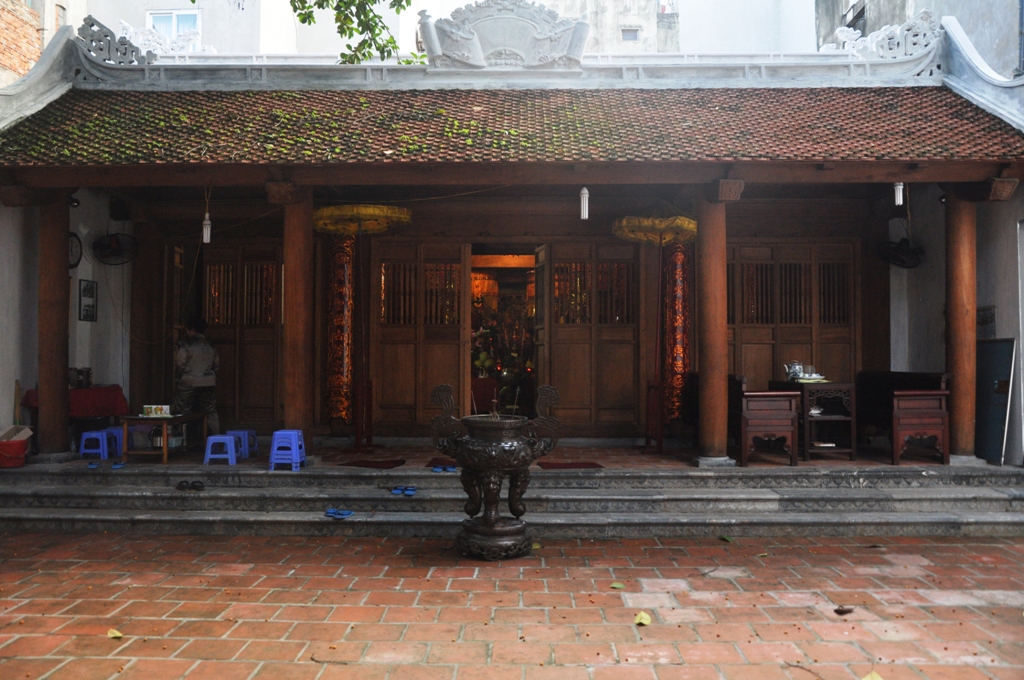The ongoing restoration of cultural and historical relics in Hanoi’s Old Quarter is expected to help the capital recover its time-honored inner value.
The restoration project began in 1998 at a century-old house numbered 87 on Ma May Street, Hoan Kiem District.
Other relics which have undergone restoration include Dong Lac Temple; Ta Hien Street, home to the “international intersection” where foreigners gather for drinks and fun; Kim Ngan Temple; Kim Co Pagoda and the Lan Ong herbal medicine street; and more. The project is funded by the Hoan Kiem District administration and has received consultation from French experts.
Before 2013, the century-old Dong Thanh Temple, at 7 Hang Vai Street, Hoan Kiem District, was “home” to six households and more than 20 people.
It also served as the office of one of the city’s market management teams.
“The temple sustained serious damage due to daily activity. Luckily, after removing the households, layers of ancient brick, stone, and steles were gradually exposed, which served as an integral basis for our restoration work,” said Pham Tuan Long, an architect who is deputy head of the Hanoi Old Quarter Management Board.
Phuc Kien School, on Lan Ong Street in the district, was where the Chinese-Vietnamese community in Hanoi performed their religious services and their children studied.
A revamp of the school has also been completed.
Long also expressed his concern over the resplendent, ancient edifices which have been “gnawed” at by the elements and termites.
Even worse, locals have replaced the damaged parts with new materials.
Work is also currently ongoing to improve the façade of Lan Ong Street, which is lined with traditional medicine stores.
“An optimistic sign is that more locals are now aware of relic preservation. Some have even spent their own money restoring the time-honored architectural features of their houses,” Long noted.
Amidst the hustle and bustle of Dong Xuan Market nearby, Huyen Thien Pagoda on Hang Khoai Street has begun to reclaim its charm and serenity as one of the capital city’s long-standing structures, dating to before 1946.
According to Long, there was little left of the pagoda, one of the city’s iconic religious institutions, in 1946 when most of it had been demolished.
During the peacetime years, 14 local households turned two sides of the relic into a crowded food shop area.
Restoration of the pagoda began last year with the removal of the households and the plants growing inside.
According to the Hanoi Old Quarter Management Board, another group of local relics have been proposed for restoration.
Statistics show that the capital city is currently home to 121 cultural, historical, and religious relics and 550 individual old houses.
Over the course of time, these relics and houses have sustained major changes and damage. Most relics have people living in them illegally.
“We all expect that these relics will soon be revived and serve as ‘green oases’ and historical reminders amidst the city’s modern construction. Hanoi should be less glittery and get back to its inner, treasured core,” noted Hoang Dao Kinh, a veteran architect.
Kinh sometimes guides groups of tourists around the capital’s Old Quarter.
Like us on Facebook or follow us on Twitter to get the latest news about Vietnam!


















































